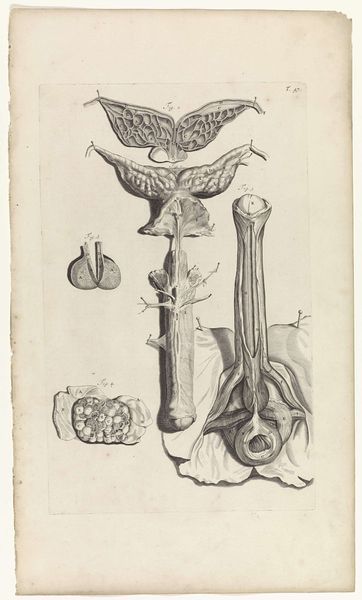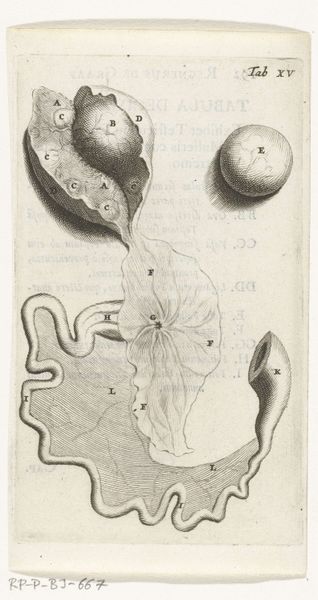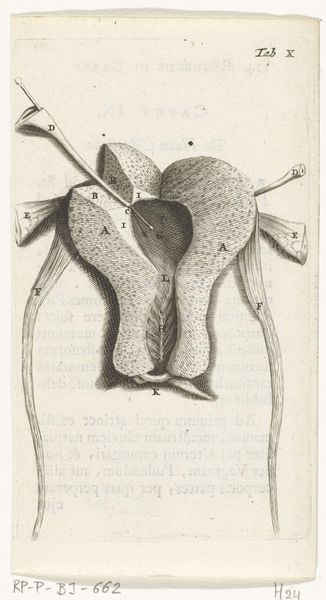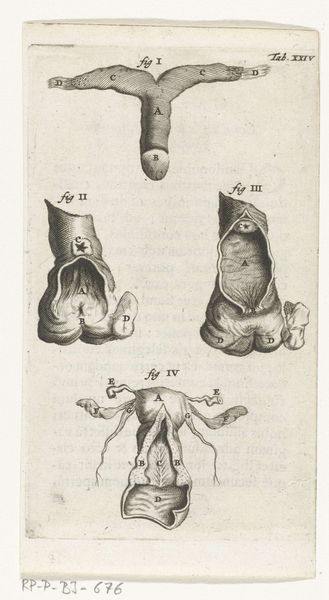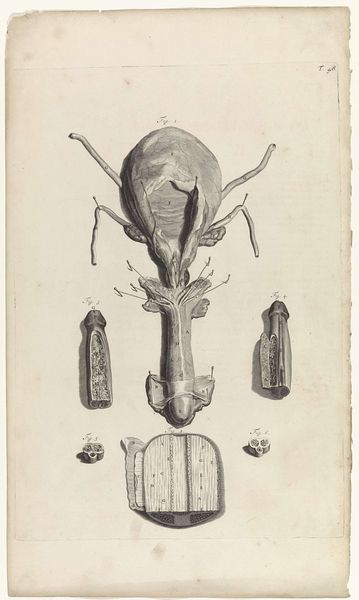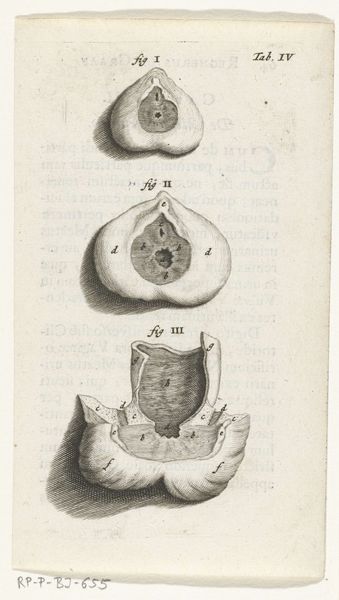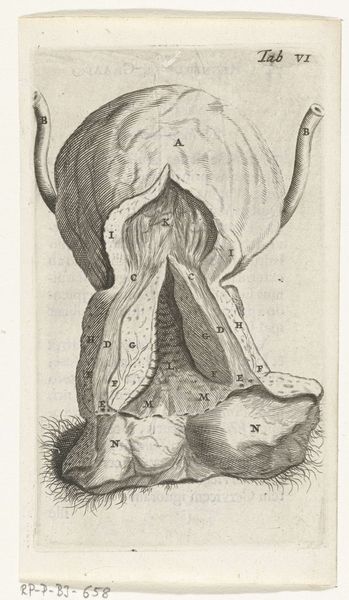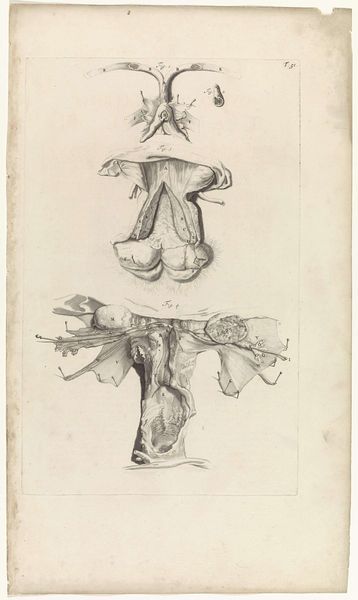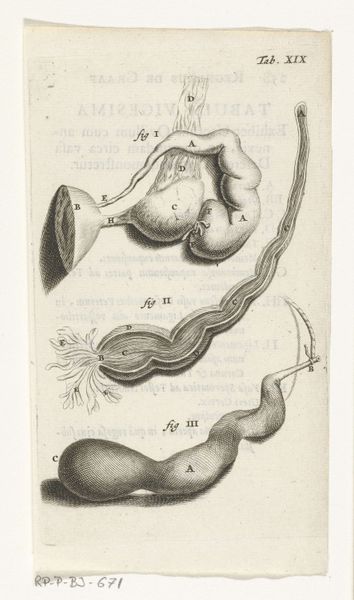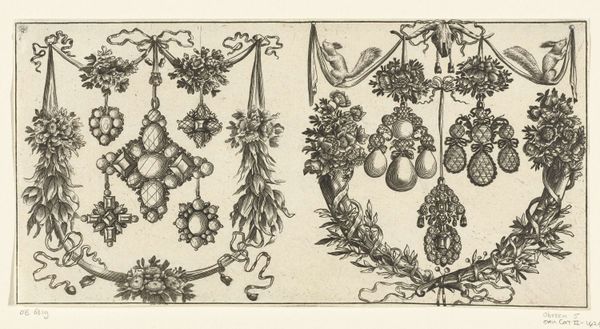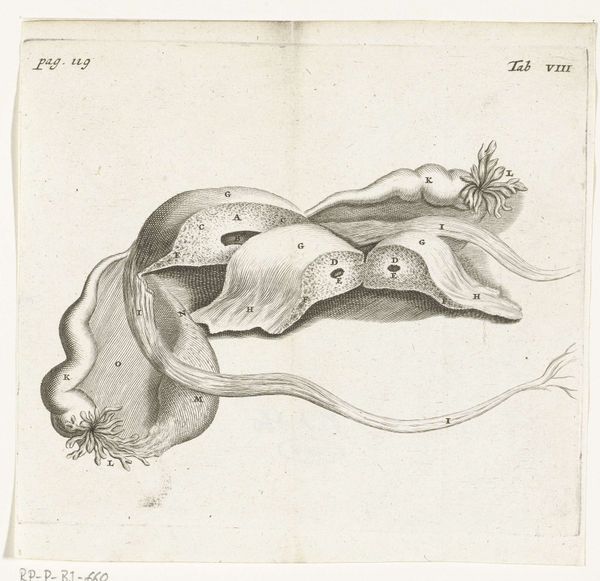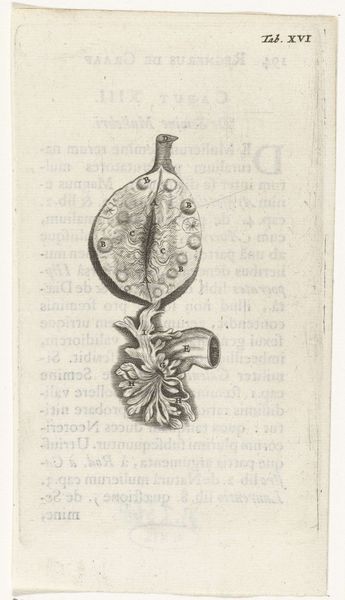
print, engraving
#
baroque
# print
#
pen illustration
#
pen sketch
#
old engraving style
#
figuration
#
ink drawing experimentation
#
line
#
genre-painting
#
engraving
Dimensions: height 140 mm, width 80 mm
Copyright: Rijks Museum: Open Domain
Hendrik Bary made this print of the female reproductive organs in the late 17th century. The composition arranges various organs in a symmetrical, almost decorative manner on a small rectangular sheet. Bary uses precise, delicate lines to depict the textures and forms of the anatomy. The stark contrast of the engraving emphasizes each element against the light background, creating a sense of clarity and order. The careful arrangement reflects the scientific interest of the time and invites contemplation of the body as a structured, knowable entity. The linear precision could also be seen as a way to control and categorize the organic complexity of the female anatomy within the semiotic structure of scientific illustration. Notice how the stylized presentation transforms what is inherently biological into a form of visual language. This print challenges simple notions of representation, prompting us to consider how knowledge is constructed through both observation and artistic interpretation.
Comments
rijksmuseum about 2 years ago
⋮
In 1672, physician and anatomist Reinier de Graaf published his De mulierum organis about the female reproductive organs. The book contains detailed prints by Hendrik Bary, among them several of the vagina. De Graaf was the first to conclude that a foetus was the product not just of a man’s seed, but also of a woman’s egg. He discovered what he called blisters, which later became known as Graafian follicles.
Join the conversation
Join millions of artists and users on Artera today and experience the ultimate creative platform.
